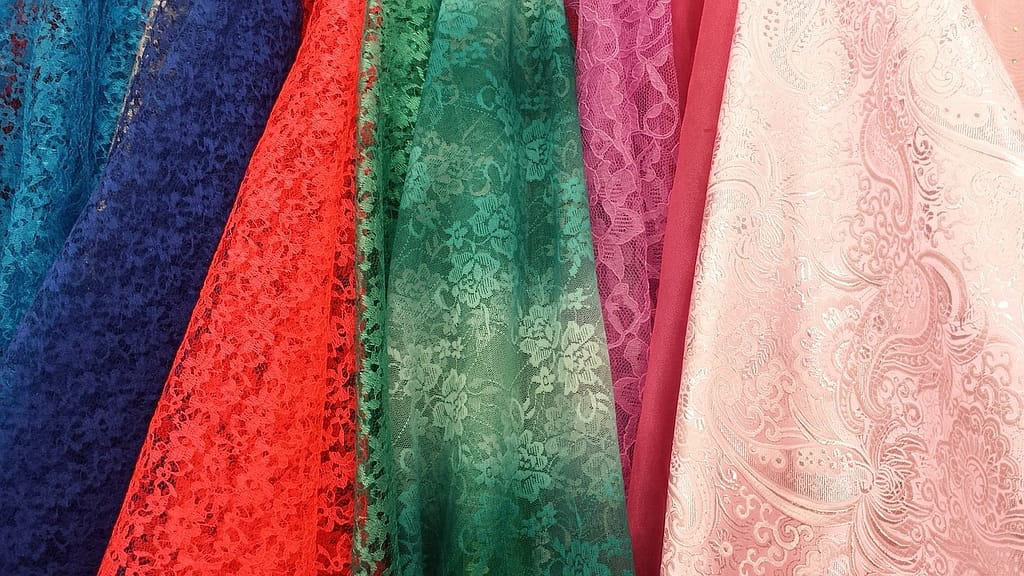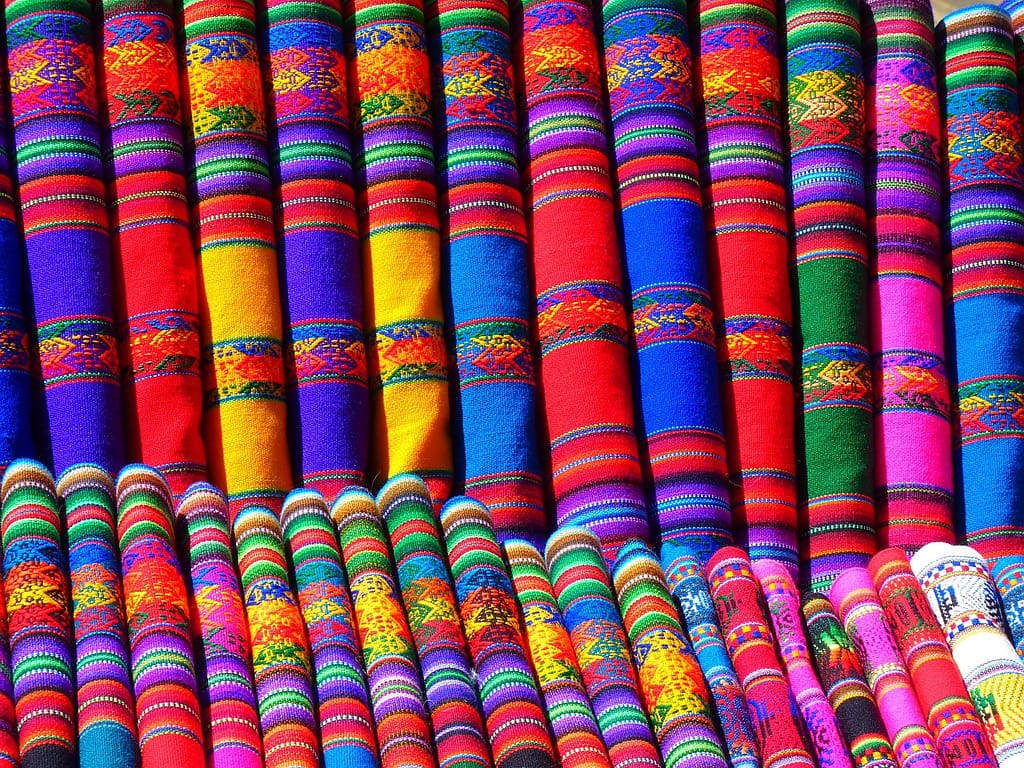Home » Linen Fabric
Staying Cool with Linen Fabric: A Summer Wardrobe Essential
When it comes to staying cool and comfortable during the sweltering heat of summer, linen fabric is a game-changer. Known for its breathability and lightweight feel, linen is a must-have for anyone looking to beat the heat in style. In this blog post, we will explore the history and origins of linen fabric, understand its unique properties, compare it to other summer fabrics, learn how to care for linen garments, discover how to incorporate linen into your summer wardrobe, and discuss the environmental impact of this versatile material.

The History and Origins of Linen Fabric
Linen’s legacy is woven through millennia, tracing its roots back to the cradle of ancient civilisations. Predominantly associated with Ancient Egypt, linen was more than a textile; it was a symbol of lightness and purity, integral to both daily life and eternal rest. The Egyptians valued linen so much that it became a cornerstone of their culture, used not only in attire but also in the meticulous wrapping of mummies, signifying its importance in life and afterlife. This veneration was due to linen’s unparalleled qualities, which made it an essential fabric under the scorching sun.
Beyond Egypt, the cultivation and weaving of flax, the plant from which linen is derived, spread across the globe. From the fertile crescents of the Middle East to the rolling fields of Europe, each civilisation embraced linen for its unique characteristics. The Phoenicians, who were instrumental in trading goods across the Mediterranean, played a crucial role in disseminating linen and flax seeds, weaving the fabric into the tapestry of various cultures. By the Middle Ages, linen had become entrenched in European society, not just as a fabric for clothing but also as a staple for household items, signifying its versatility and enduring appeal.
This ancient fabric’s journey from the banks of the Nile to modern wardrobes underscores its timeless allure and adaptability. Despite the evolution of textiles, linen’s historical significance and intrinsic properties continue to make it a favoured choice for contemporary fashion, marrying tradition with modernity.
Understanding the Unique Properties of Linen
Linen boasts a myriad of attributes that make it exceptionally well-suited for balmy climates, a natural choice for anyone seeking solace from the heat. The fibres of the flax plant, from which linen is meticulously crafted, possess a remarkable capability to absorb moisture rapidly and release it just as swiftly. This distinctive feature ensures that linen garments offer unparalleled comfort by wicking away perspiration and allowing it to evaporate quickly, thereby maintaining a dry and cool sensation against the skin.
Furthermore, linen’s breathability is second to none. Its structure allows for optimal airflow, facilitating the movement of air through the fabric and around the body, thus preventing the uncomfortable build-up of heat. This natural ventilation system is instrumental in regulating body temperature, ensuring that the wearer remains cool and comfortable, even as temperatures soar.
Another compelling attribute of linen is its texture, which contributes not only to its aesthetic appeal but also to its cooling effect. Unlike some other fabrics that cling to the skin in humid conditions, linen tends to remain loose, ensuring that any moisture is swiftly absorbed and evaporated. The slight stiffness of new linen garments softens with each wash, without diminishing the fabric’s resilience or cooling properties, making it a durable and practical option for everyday wear during the summer months.
These distinctive qualities of linen, rooted in the very nature of the flax fibre, underline its suitability as the fabric of choice for those wishing to remain cool and collected during the warmer seasons.

Linen vs. Other Summer Fabrics
In the realm of summer apparel, linen emerges as a premier choice, offering distinct advantages over other fabrics typically enlisted for warmer weather wear. Whilst synthetic fibres, such as polyester, possess a certain resilience and cost-effectiveness, they often fall short in facilitating the body’s natural cooling processes. Polyester, for example, tends to retain heat and moisture, leading to discomfort and a clammy feel under the sun. In stark contrast, linen excels in moisture management and breathability, characteristics vital for maintaining comfort during hot spells.
Cotton, another natural fibre favoured in summer collections, presents a softer and more skin-friendly alternative to synthetics. However, it does not quite match linen’s proficiency in moisture wicking and rapid drying. Cotton garments absorb sweat, yet they may remain damp for extended periods, potentially causing unease in humid conditions. Linen, with its inherent ability to absorb and rapidly evaporate moisture, ensures the wearer stays dry and comfortable throughout the day.
Silk, often celebrated for its luxurious texture and lustre, also plays a role in the summer fabric spectrum. Despite its natural fibre status and lightweight feel, silk’s breathability and moisture absorption capabilities are generally inferior to those of linen. Silk may offer aesthetic and tactile appeal for evening wear or special occasions, yet it might not provide the same level of practicality and comfort for day-to-day summer wear.
Linen’s natural texture also adds a unique visual and tactile quality to garments, distinguishing them from the smoother appearance of cotton and the sheen of silk. This aspect, combined with its superior comfort and environmental advantages, solidifies linen’s position as a superior choice for those seeking both style and sustainability in their summer wardrobe.
Caring for Your Linen Garments
Maintaining the pristine condition of your linen wardrobe requires a degree of mindful handling. Linen, with its natural fibres, demands specific care to preserve its unique texture and durability. It is advisable to launder linen clothes using the gentle cycle or by hand in lukewarm water to prevent unnecessary strain on the fabric. Harsh chemicals and bleach should be eschewed in favour of mild detergents designed for delicate materials, ensuring the fabric maintains its integrity and colour over time.

After washing, shunning the tumble dryer in favour of air-drying is a wise choice; this not only conserves the fabric’s structure but also contributes to energy savings. Whilst drying, avoid direct sunlight exposure as it can lead to fading and weakening of the fibres. Instead, opt for a shaded area where airflow can assist in the drying process. If you encounter wrinkles, which are characteristic of linen’s natural texture, ironing on a damp fabric with a moderate heat setting can restore your garments to their smooth appearance. This should be done when the fabric is still slightly damp to ease out creases effectively.
In cases where your linen attire requires a deeper clean, professional dry cleaning is a viable option, particularly for items embellished with intricate details or structured pieces like blazers and suits. By adhering to these care guidelines, your linen garments will retain their beauty and comfort, ensuring they remain a cherished part of your summer ensemble for seasons to come.
Incorporating Linen into Your Summer Wardrobe
Embracing linen during the warmer months opens up a plethora of sartorial possibilities, seamlessly blending elegance with comfort. A lightweight linen blouse or tunic is the epitome of summer ease, perfect for pairing with denim shorts or a breezy skirt. For those balmy evenings, a linen wrap dress or a sleek jumpsuit offers an effortlessly chic ensemble that marries style with ventilation. Men can elevate their summer attire with crisp linen shirts, available in a spectrum of hues, coupled with Bermuda shorts for an ultimate leisurely appeal. Additionally, a well-cut linen suit provides an impeccable option for summer weddings or formal events, ensuring you remain cool whilst looking sharp. Experiment with layering textures by integrating linen scarves or opting for linen-blended footwear for a subtle nod to this versatile fabric. With linen, you can curate a wardrobe that not only withstands the heat but also stands out with timeless elegance.

The Environmental Impact of Linen
Linen stands out not only for its exceptional comfort and style but also for its commendable environmental credentials. The cultivation of flax, the foundational crop for linen, is notably less demanding on natural resources compared to other textile crops. Flax thrives in conditions that require significantly lower levels of irrigation and pesticides, positioning it as a more sustainable choice in the textile industry. This inherent efficiency in flax farming translates into a lower environmental footprint, making linen a favoured option for those mindful of their ecological impact.
The sustainability of linen extends beyond its cultivation. As a natural fibre, linen is fully biodegradable, ensuring that once a garment reaches the end of its useful life, it does not contribute to landfill waste. Instead, it gracefully returns to the earth, leaving minimal trace behind. This biodegradability, combined with the potential for recycling, enhances linen’s status as an eco-friendly material. Linen garments can be repurposed or recycled into new items, promoting a circular economy that further reduces the environmental impact.Opting for linen clothing and products not only elevates one’s summer wardrobe but also aligns with a greater commitment to preserving our planet. It offers a harmonious blend of aesthetic appeal, practicality, and environmental responsibility, encapsulating the essence of sustainable fashion. By embracing linen, consumers make a conscientious choice that supports both personal comfort and the well-being of the environment, underscoring linen’s role as a truly green fabric in today’s fashion landscape.